Review for Gatchaman Crowds
Introduction
Consider this the obligatory ‘jumpers for goalposts’ opening paragraph of nostalgia. When I’m about to review Gatchaman Crowds, I can’t begin without mentioning Battle of the Planets, an unforgettable part of my childhood, a cartoon that was essential viewing, and unbeknownst to me at the time, was priming me for a life of anime fandom. After all, at the age of five, I had no idea that it was anime, or had any idea of the processes and techniques that went into its creation. But I would be glued to the adventures of Mark, Jason, Tiny, Keyop, and Princess, and their spaceship, the Phoenix, as they fought to keep the world safe from Zoltar and the forces of Spectra, as narrated by R2-D2 knock-off, 7-Zark-7. I neither knew, nor cared that this was another Robotech style creation, that in 1978 a US company had licensed a Japanese anime from 1972 called Science Ninja Team Gatchaman, and had re-edited it until it was Western audience friendly, hence the Hanna Barbera animated robot narrator replacing all the violence, and it was marketed to us as Battle of the Planets. All we knew was that it was great make-believe for playtime at school (I was always Tiny). A few years later they tried again, with fewer edits and no robot, in a show called G-Force (one which we didn’t get in the UK), but it wasn’t until I became a fan of anime that I learned of its origins as Gatchaman.
I never watched Gatchaman in its original form, just as I’ve never seen Macross, even though the original Gatchaman was eventually licensed and released by Sentai in the US. I did try a Battle of the Planets episode a few years ago, and quickly learned that you can’t go home again. But as with all significant moments in entertainment, a few years down the line there always will be someone looking to capitalise on past success. The shocking thing is that it took 30 years (there were a couple of sequel series in Japan in the late seventies) for someone to have another go at a Gatchaman series, a short OVA in the nineties notwithstanding. In 2013, they actually went and made a live action Gatchaman feature film. But more relevant is that a new television show was also made, the first since 1979. You can bet that now that it’s coming to the UK as Animatsu’s first UK anime release, I am approaching it simply awash with nostalgia. But if you’re expecting bird outfits, a fiery spaceship, a narrating robot, and an androgynous villain, you’ll be taken aback at this 21st Century updating of Gatchaman. It does have a talking panda though... and an androgynous villain...
It’s the near future, one of those technological utopias that we all hope for, and while all seems peaceful and transcendant, urban myths abound of the Gatchaman, superheroes protecting the Earth from unknown alien menaces. This matters little to student Hajime Ichinose, who is considered kooky for her love of paper notebooks in a world of electronic notepads, phones and computers. It turns out that her passion for notebooks is useful, and prescient, for the Gatchaman team exists, and Hajime has the necessary power hidden away to be a member. That power is unleashed with the ‘heart’s notebook’ activated by alien powers and pulled from within, used for manifesting abilities, communicating, erasing witness memories (which is why they are only an urban myth), and more. The Gatchaman Team is currently battling the alien MESS invaders, but it isn’t long before the unconventional Hajime comes up with a unique approach.
Besides, it seems this future world might not even need heroes. It’s a world where people power is becoming ever more manifest, empowered by Rui Ninomiya’s GALAX social media app, a combination of social network and second life, facilitated by a powerful AI, which moves people into working together to solve their own problems, to ‘Update the World’, be their own heroes. But things start to go wrong when Rui seeks the aid of Berg Katze, an enigmatic figure with rather familiar looking powers, someone who only wants to update the world in their own image of chaos and destruction.
12 episodes of Gatchaman Crowds are presented across 2 Blu-ray discs from Animatsu, thus...
Disc 1
1. Avante-Garde
2. Asymmetry
3. Futurism
4. Kitsch
5. Collaboration
6. Originality
7. Abjection
8. Genuine
9. Forgery
Disc 2
10. Crowds
11. Gamification
12. Collage
Picture
Gatchaman Crowds gets a 1.78:1 widescreen transfer at 1080p resolution, and it looks fantastic. The image is clear and sharp throughout, with smooth animation, detailed line art, and vivid colours. The character designs take a step away from the usual anime aesthetic to offer something a little more minimalist and stylish, but individual enough to make the character designs more memorable. The world design is detailed and clean, reflecting the utopian futurism. Reflecting the character designs, the animation too can be minimalist, especially during the quieter moments, although the action sequences certainly make an impact. The Gatchaman suits have had a CGI makeover, becoming more mechanical in look, taking a leaf from the Tiger & Bunny suits in terms of their neon retro styling, and from the way they integrate into the animation.
The images in this review are sourced from the PR, and may not necessarily reflect the final retail release.
Sound
You have the choice between PCM 2.0 Stereo English and Japanese, although the options are a little more complicated than on the usual anime disc. The default is Japanese with subtitles, although you can have Japanese with subtitles and without songs and signs. On the other hand you can have English, or English without songs and signs captions. The downside of all this choice is that the audio and subtitles are locked during playback. There’s no way of just getting the image raw.
When you start an episode and the opening credits roll, there’s a discrete note in brackets saying [official lyrics]. You’ll only be confused until the opening song starts to play and the subtitles appear on screen, with the worst Engrish I have ever read, wholly nonsense words, some just made up on the spot, and which make you wish that they’d created some unofficial lyrics instead. The original Japanese audio is well balanced, the dialogue clear, and the action coming across with decent stereo impact, with Taku Iwasaki doing the honours for the show’s score. It’s an impressive audio presentation, and I have to say that what I heard of the English dub actually lives up to that, with enthusiastic and character appropriate voice actors and performances. I do think that the dub was a little too colloquial American for me, trying to match the slacker attitudes of some of the characters, but your mileage may vary.
The subtitles are accurately timed and are free of typos, and just like the Monogatari franchise this is a show that has a whole lot of screen text to translate. It is after all an anime for the social network age, and you will be pausing the screen quite frequently to read the sign translations, either that or opting for the subtitle only stream to free up the screen so you can better appreciate the animation.
Extras
Gatchaman Crowds is presented across two Blu-ray discs from Animatsu. It looks as if they are using Hanabee’s masters for the show, which in turn are a reworking of Sentai’s discs. Sentai use a bold, and large yellow font for their Blu-ray subtitles as a rule, but Hanabee opt for a smaller, more discrete white font, which is certainly more pleasing on the eye, and not too distracting from the animation.
The discs present their content with static menus, and all you get on disc 1 are the first nine episodes.
On disc 2, you’ll find 6 of the textless opening sequences, running to just over 8 minutes, the textless ending, and trailers for Medaka Box, Ground Control to Psychoelectric Girl, Majestic Prince, and Devil Survivor 2, all Hanabee titles in Australia, and only Devil Survivor 2 as yet released in the UK by MVM (its Blu-ray is coming to the UK next month).
Conclusion
I really wanted to like Gatchaman Crowds. I wanted to love this show, and there is a part of me that really wanted Animatsu to hit one straight out of the park with their first anime release. But that’s not the main reason. It’s nostalgia that’s driving my wishful enthusiasm, my love for the original Battle of the Planets demanding an update that lived up to my long faded memories. Gatchaman Crowds almost does it. Certainly there are elements in the show that speak strongly of the original, little nods and references, even when compared to the reworked and westernised Battle of the Planets that spark nostalgic memories. Also, Gatchaman Crowds has a very strong, compelling and above all fascinating premise driving the story. But what ultimately disappoints is that in its execution, Gatchaman Crowds is too much like most of the other anime being made today, both in terms of character, and in its style.
It’s all an Earth-bound adventure in this series. You don’t get the vehicles and the outer-space action. The Gatchaman group is a team sponsored by alien involvement, designed to protect the Earth against alien invasion, and recruiting its members from both Earth and from farther afield, making use of the convenient Amnesia Effect to remain concealed from the general public. While they may not have the vehicles, they instead have fantastic mecha suits which they don to do battle, but which bear little resemblance to the caped suits of the original. They do get activated by the command ‘Bird, Go!’ though.
We also take a step away from the usual monomaniacal villain of the Sentai genre, with Berg Katze introduced as the antagonist, a former Gatchaman who has something of a grudge against his former allies, as well as a penchant for anarchy. The third vertex of the triangle is the Galax social network application, which at the start of the show, operated by Rui Ninomiya, is a positive force for change, empowering people to do good, to update the world through their own actions, rather than waiting for the government or authority to fix things. When Berg Katze offers Rui more power with which to do this, the Crowds of the title, digital avatars in the real world with great power, Rui uses them with select Galax users in crisis situations. Of course Berg Katze is up to no good, and Galax is merely a tool he aims to use in his campaign of mayhem.
One problem with Gatchaman Crowds is that it conforms to the current character stereotypes prevalent in anime, and this is less a show where the characters grow and develop, than it is a show where the usual caricatures are re-affirmed. The biggest problem for me was the main character, Hajime Ichinose, who gets recruited into the Gatchaman team at the start of the show, and through sheer personality changes everything up. She’s a simple, straightforward, single-minded girl, with a slacker attitude, who will consistently do the ‘wrong’ thing, and have it turn out to be right all along. And nothing fazes her. This isn’t a show shy of a little death and destruction, but she seem emotionally disconnected from the whole thing in a way, ‘happy-go-lucky-ing’ her way through the story.
This infuriates the straight, by-the book Gatchaman Sugane, who’s supposed to be her mentor, but winds up being ignored, which pretty much sets his character in stone. The leader of the Gatchaman is Pai-man, who is not a panda, but is cute, opinionated, and cowardly. Joe’s the cool, bad-ass Gatchaman with confidence issues. Utsu-tsu is the quiet, understated, depressed girl stereotype (see Yuki Nagato from The Melancholy of Haruhi Suzumiya), who constantly repeats a catchphrase based on her name, but which meaninglessly gets translated in the subtitles as “Let me get lost-tsu in reverie”. O.D is the effeminate wise-man gay character, and for no particular reason, Rui is a transvestite. And Berg Katze is Grell Sutcliff from Black Butler. I am getting tired of stereotypes, archetypes and clichés in anime, and I really want characters that are unique, that develop and grow, and have a story arc through the series. You don’t get that in Gatchaman Crowds.
The second issue is the nichijou phenomenon, the aspect of the everyday, the minutiae of life which have long been de-rigueur in slice of life anime, but is now making its presence felt in other genres as well. It’s normally a good thing, making these anime worlds seem more rounded and well dimensioned, but in Gatchaman Crowds it actually distracts from the main story arc. All sorts of bad things may be happening in the world, but we get half an episode with Hajime’s arts and crafts group making collages, doing origami with Utsu-tsu, little bits of nothing that take the place of story development. I only realised that Berg Katze was a Gatchaman gone bad in a passing comment in an episode after his introduction. It really is the sort of story point that needs to be highlighted, explored, and understood. In Gatchaman Crowds, it always feels as if the important story elements don’t really matter, and I was left with an empty feeling, asking just why these things had happened in the show, and I had no answers.
The final straw might just be the penultimate episode, with the rest of the Gatchaman team issuing forth odes to just how ditzy Hajime had come and changed their respective lives for the better. As a recap half-episode, it might just be the most sugary, schmaltzy anime put to Blu-ray. Incidentally, there is a director’s cut to the final episode, which supposedly ties up some more loose ends, does a better job of explanation, but we in the West have to make do with the broadcast version only.
And despite all this, I want to watch Gatchaman Crowds again. As I said the premise is sound, and it offers the best use of a social network tool as part of a storyline since Eden of the East. You might have to work past the characterisations, and the odd, trivial storytelling choices to get to the meat and bones of the story beneath, but that story does seem like a worthwhile one. Also, in terms of its visual impact, Gatchaman Crowds is a cut above the rest, putting a lot of effort, energy and imagination into its animation. It looks very good indeed on Blu-ray. It’s a solid start from Animatsu, which should get a decent bit of traction from the Gatchaman branding. It’s certainly managed to hit the right notes with its Japanese audience, as the second series, Gatchaman Crowds insight is due this summer. Hopefully it will address all those questions left lingering by this first series.
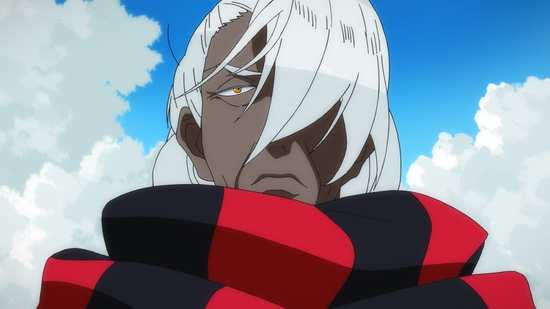
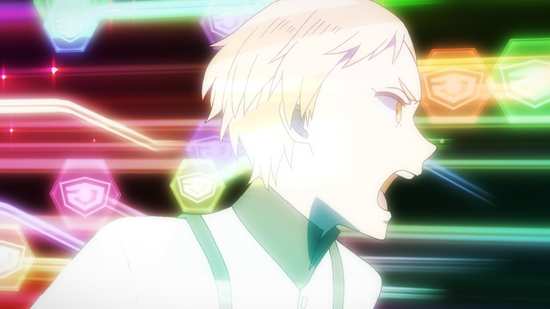
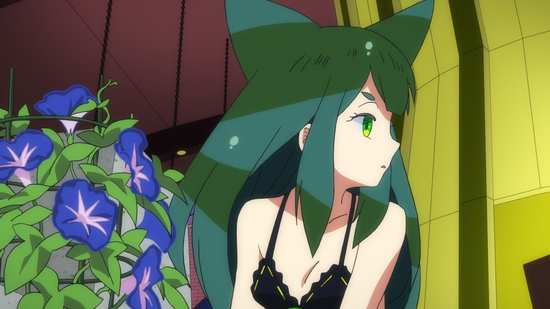
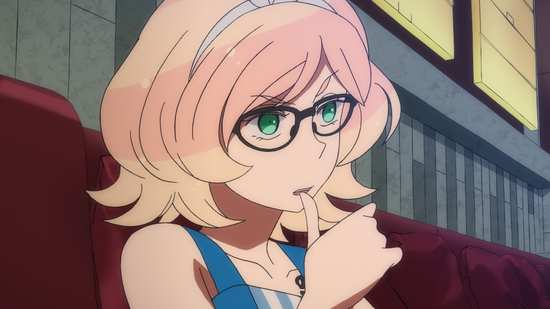
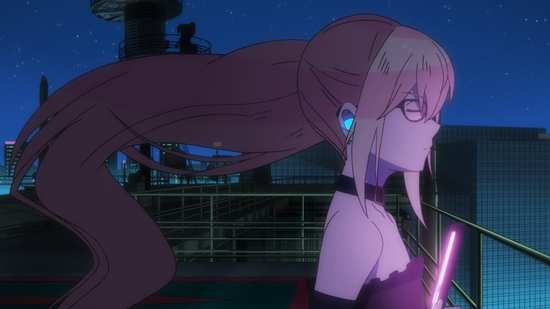
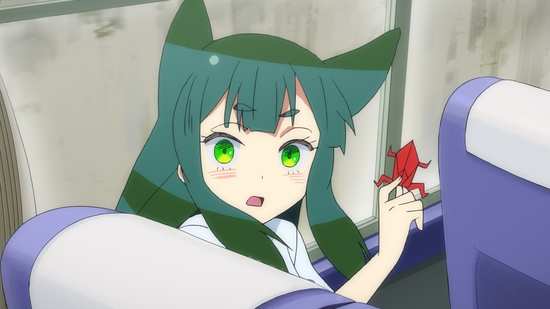
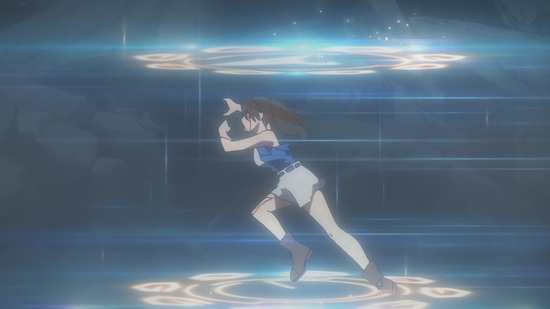
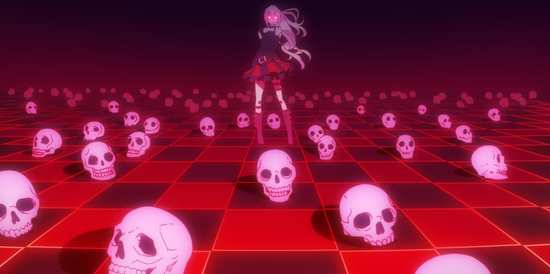
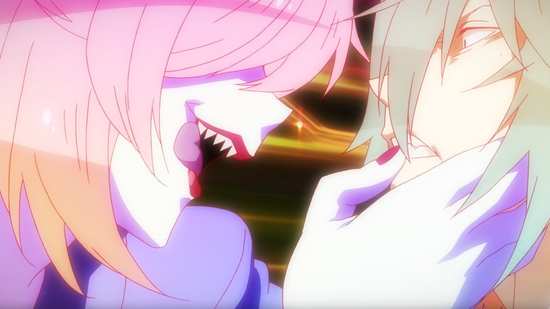
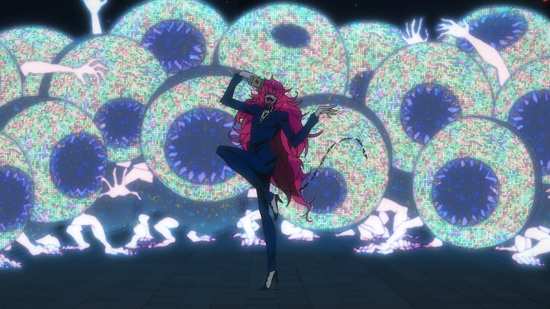

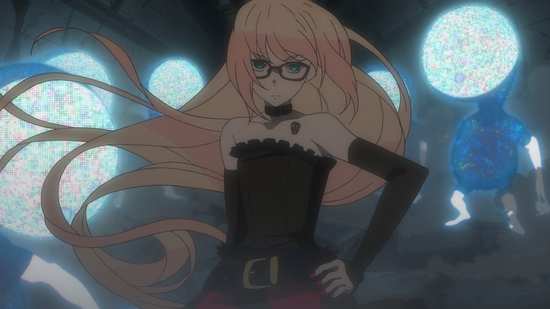
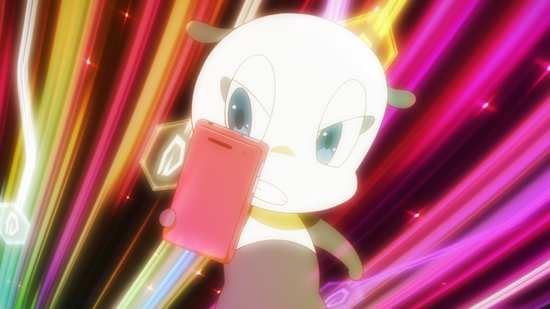
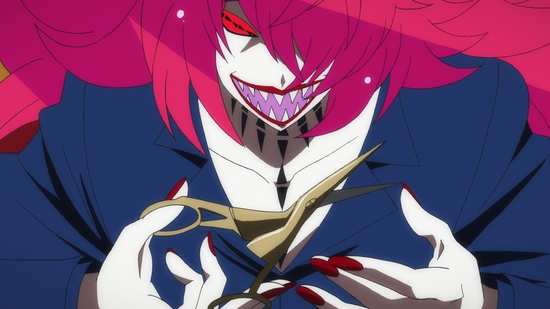
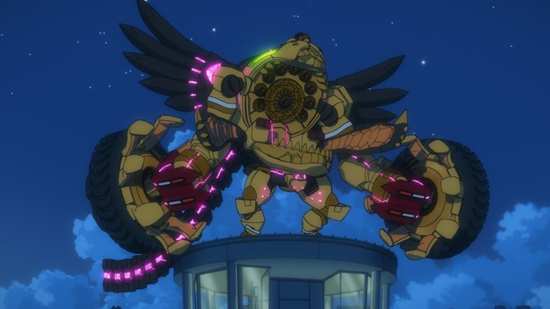
Your Opinions and Comments
Be the first to post a comment!